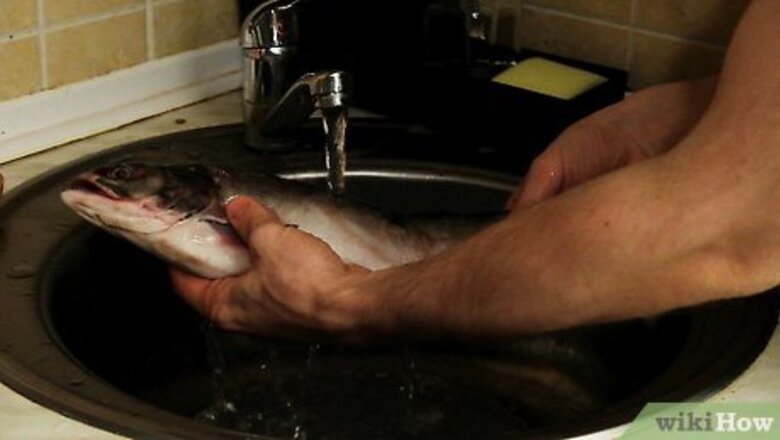
views
Removing the Entrails

Rinse the salmon in cold running water. Make sure the fish is completely washed on all sides.
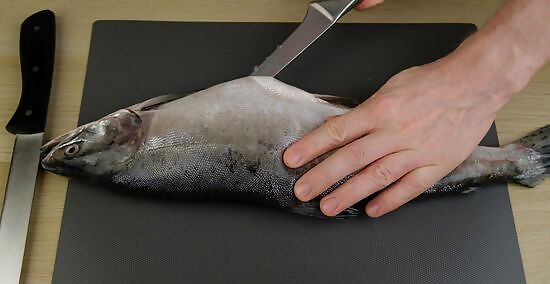
Open the belly. Place the fish on its side on a large cutting board. Hold the tail down with one hand, and with the other insert a fillet knife into the vent, or the anus, located on the underside of the fish near the tail. Pull the knife from the vent along the belly toward the head, and stop just between the gills. Make sure you're using a sharp knife to make the cut. You should not have to make a sawing motion; the cut should be clean. Take care not to actually cut deep into the vent or belly, since the organs inside may contain bacteria that could contaminate the fish. If your initial cut is too shallow, you can go back and make a deeper cut. If you do cut into the organs, rise the liquid off immediately. Make sure it flows out of the fish, rather than deeper inside.
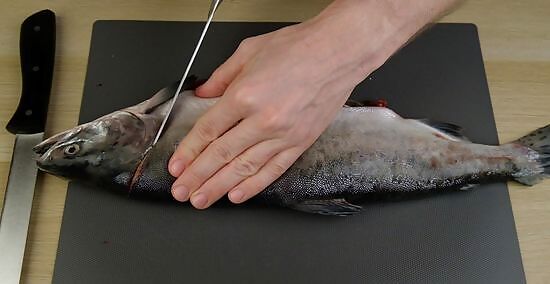
Make a cut from the fish's back to its belly. Start at the backbone above the pectoral fin. Press your knife down until you can feel the spine, then make a downward cut that extends behind the pectoral fin and ends at the belly. Don't cut too deeply, since you want to avoid damaging the organs. Gently lift the meat to make sure it is detached from the head area. You should be able to lift a flap from the side of the fish. If it's still attached to the head, use the knife to cut it away.
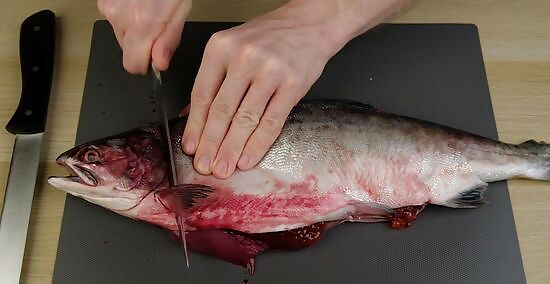
Turn the fish around and make a cut from the fish's belly to its back. In a similar fashion, start the cut at the bellow below the pectoral fin. Since you're coming at it from the other side, extend the cut in front of the fin and end it at the backbone. Lift the flap of meat to make sure it is no longer attached to the head.

Place the salmon on its belly and cut off the head. Use a heavier, sharper knife, rather than the fillet knife, to make a cut straight through the background just behind the head. The intestine will still be attached to the vent. Use your knife to cut it cleanly. The head, internal organs, and pectoral should come off in one piece. Discard them. A serrated knife makes it easier to cut through the backbone.

Remove the kidney. The long, dark red organ along the salmon's backbone is its kidney. Use the fillet knife to carefully cut it away and lift it from the fish.
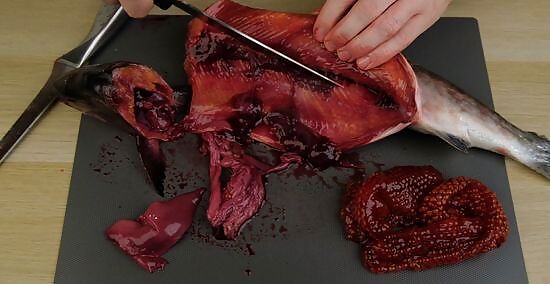
Remove the remaining fins. Use a large knife (preferably serrated) to saw off the dorsal and caudal fins, then discard them.
Making the Fillets
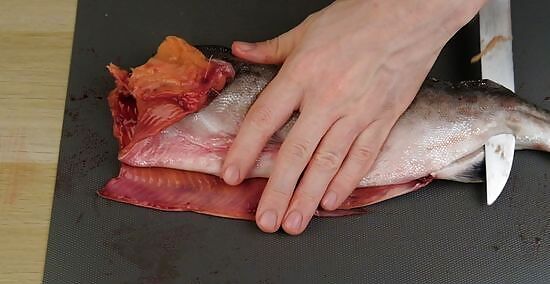
Remove the meat from one side. With the salmon resting on its side, insert the fillet knife at the end where the head used to be, just above the backbone. Begin using a gentle sawing motion to cut through the ribs and separate the meat from the contoured spine. Don't cut too far away from the backbone, since you want to preserve as much meat as possible in the fillet. Cut until you reach the tail. Make a perpendicular cut across the tail and lift the fillet from the salmon.
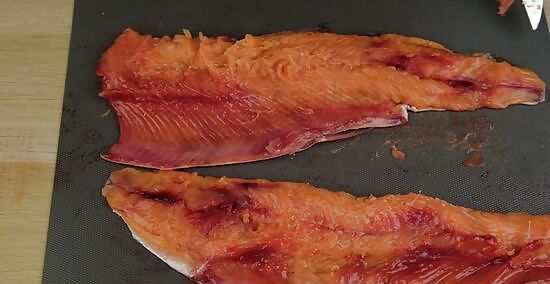
Make the second fillet. Turn the salmon over and insert the knife where the head used to be, just above the backbone. Use the same technique to saw through the ribs and remove the meat from the spine, creating a second fillet. When you reach the tail, cut the fillet away from the body and set it aside.
Removing the Bones
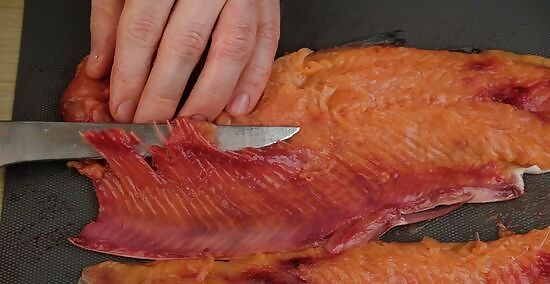
Remove the ribs. Lay the fillet skin side down on the cutting board. Insert the fillet knife just underneath the first few ribs. Slowly work the knife under the ribs, angling it toward the thicker part of the fish and toward the tail, to loosen a thin flap of meat containing the ribs. Continue until you have removed the ribs, then discard the flap. Don't cut too deeply underneath the ribs, or you'll lose too much meat. Cut as closely underneath the ribs as possible, so you only remove a thin layer of meat attached to them. Repeat with the second fillet.
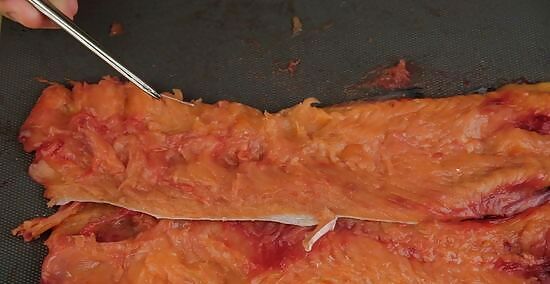
Remove the pin bones. Extract the remaining small rib bones near the tail end of the fillet with needle-nosed pliers.
Finishing the Job
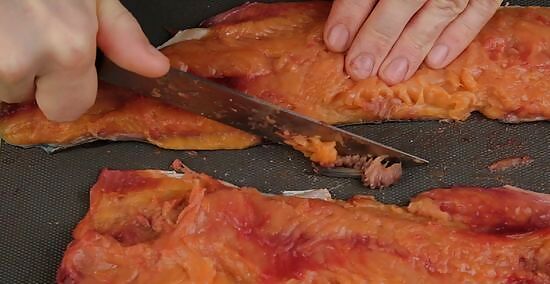
Trim, as desired, the edges of fatty tissue from the filet’s belly meat. Some consider this portion of the meat to be too strong in taste. Simply slice it off and discard.
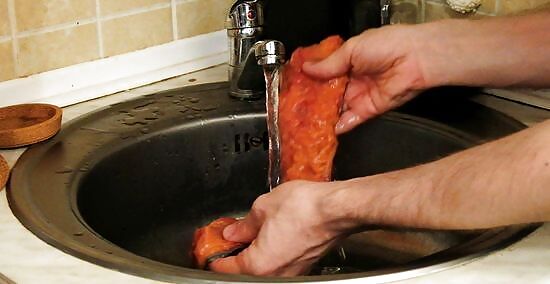
Rinse the fillets in standing cold water. Salt may be added to remove superficial impurities from the meat.
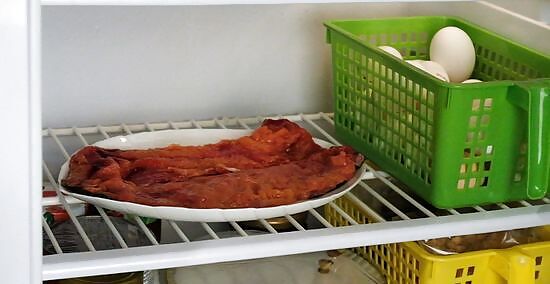
Store the meat in a refrigerator. Do not let the meat sit out for too long, or it will spoil. You can also freeze the meat in freezer bags for up to six months.
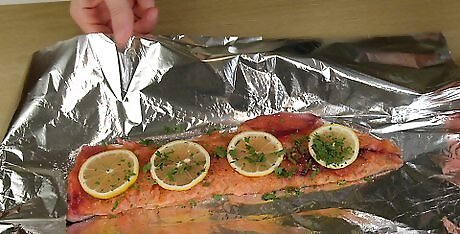
Prepare the salmon fillets as desired for cooking. The backbone and head may be saved to make a broth for soup or risotto.
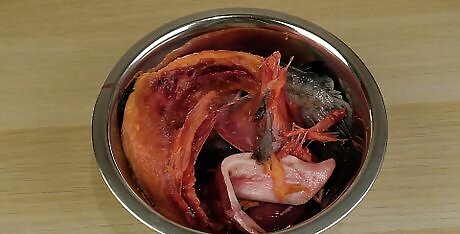
Discard the leftovers. Put the fish trimmings, entrails, and carcass in a tied-off plastic bag and toss in the garbage.



















Comments
0 comment